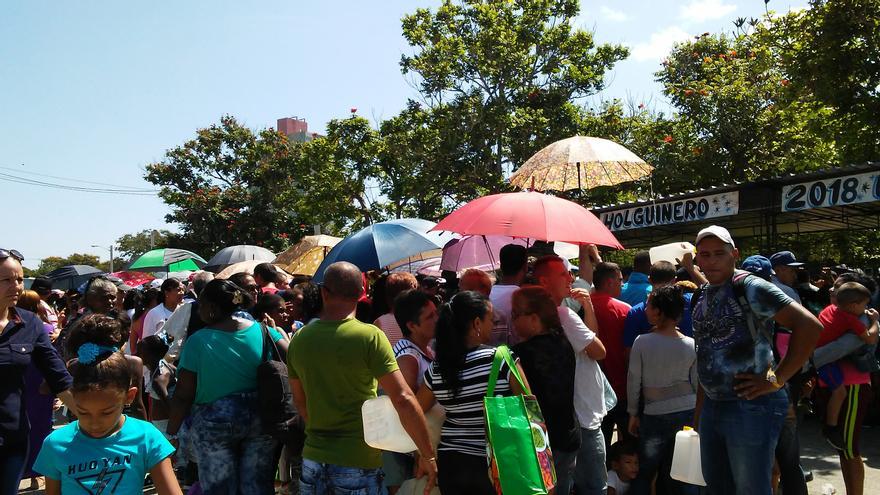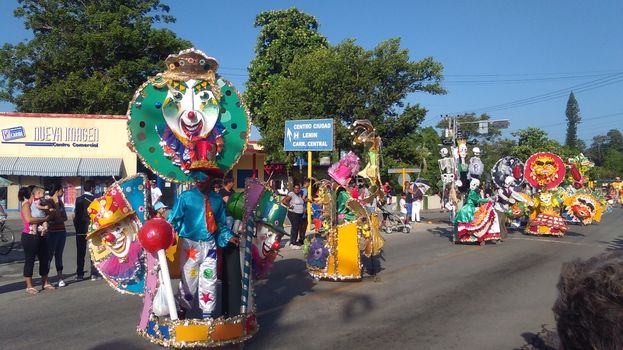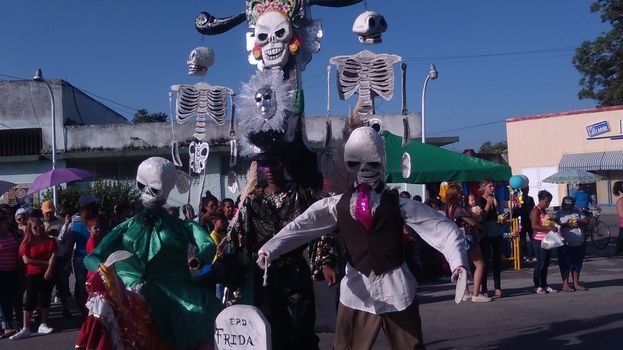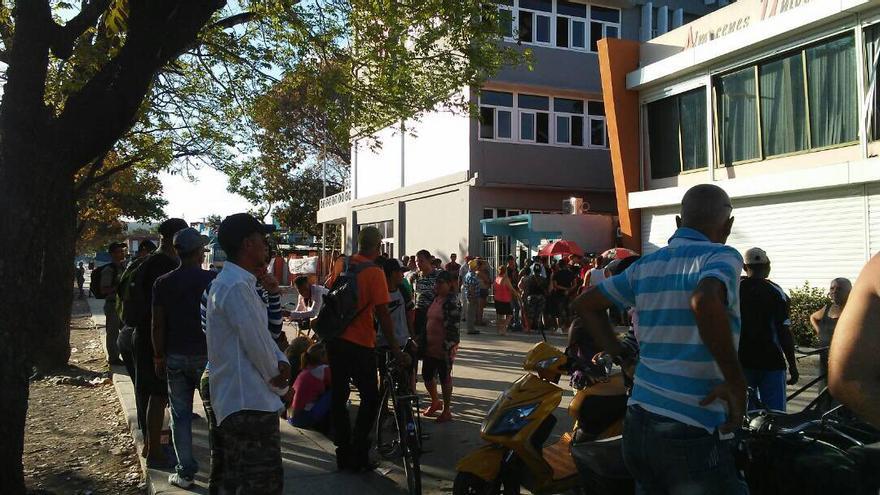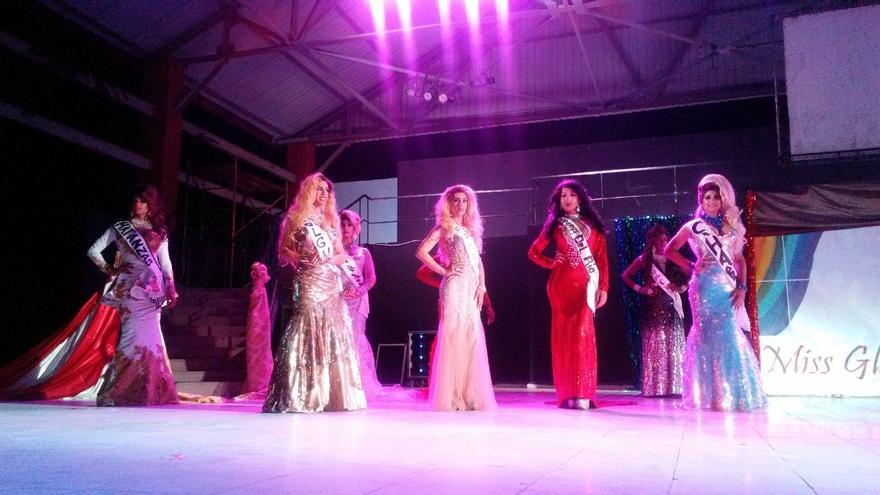
![]() 14ymedio, Leonardo del Valle, Holguín | 7 September 2018 — In the heart of Hoguin, Tuesday and Wednesday nights were filled with sequins before the astonished looks of the security guards at the Bariay Cultural Center. The 2018 Miss Glamour Holguin contest saw a parade and the best transvestism on the Island in the fifth edition of some awards that are still controversial in the conservative society of Holguin.
14ymedio, Leonardo del Valle, Holguín | 7 September 2018 — In the heart of Hoguin, Tuesday and Wednesday nights were filled with sequins before the astonished looks of the security guards at the Bariay Cultural Center. The 2018 Miss Glamour Holguin contest saw a parade and the best transvestism on the Island in the fifth edition of some awards that are still controversial in the conservative society of Holguin.
“If they are like this now, what will we see when they can marry?” said one of the guards at the state venue where the event took place, under the auspices of the LGBTI Cuban and Cuban-American community. To see men holding hands is still taboo in many parts of the Island. Despite the work on the part of the State and civil society to erase homophobia, centuries of machismo remain in the core of national culture. continue reading
Transvestism is considered an art and is not only linked to the LGBTI community. There are many heterosexuals who enjoy changing their appearance and interpreting characters. Long dresses, extremely high heels, wigs with hair below the waist and flawless makeup enhance the beauty of these ladies of the stage.
The eight contestants performed in playback songs of Juan Gabriel, Céline Dion, Isabel Pantoja and Rocío Jurado, among other artists, during a spectacle that overflowed with passion, strength and style.
The young Manuel Yong, presenter of the magazine Mi Habana TV, and the charismatic Margot, a Havana drag queen of vast experience, conducted the show which, during its first day ended at the stroke of two in the morning, long before the second, the great award night.
The crown of Miss Glamor Holguín 2018 went to Huma Rojo, who off stage is Ángel Boris Fuentes, a 25-year-old man, director of the Ciego de Avila dance company ABC Danzares and a third-year ballet student at the University of the Arts. The second place was taken by Adriana Brown, from Havana and the third place medal was won by Miracles, from Matanzas.
Also awarded were prizes for Miss Sympathy, Miss Public, Miss Photogenic and Miss Social Networks.
“Doing an event of this kind is a very difficult task, especially when you feel that many see it as something exclusive to the gay community, something that only matters to us and is supported by us,” Mikeli Peña, contest director and president of the central jury, tells 14ymedio.
The cost of a ticket to see the show is two CUC (roughly $2 US), the average salary of an engineer for two days of work, which goes to the State for allowing use of the Bariay facilities for the contest. The resources for the show are obtained through sponsors on the island and in the United States, explains Peña.
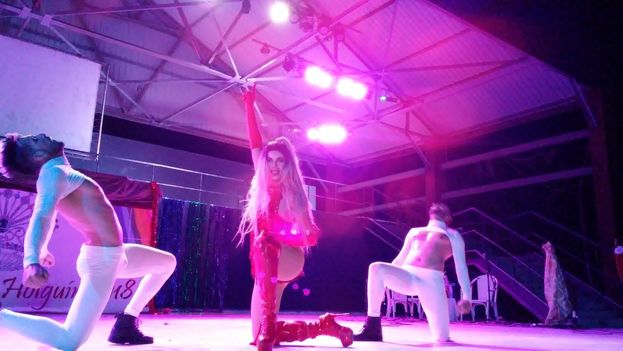
“Thanks to them we can deliver the prizes and assume most of the expenses incurred by the event such as lodging, food and transportation for the guests.” The Cuban gay community affirms that this is the best competition among its kind in the country, and that beyond the recognition “it is an immense responsibility,” Peña adds.
The notes of a song sound from the dark stage that suddenly lights up to unveil Shanaya Montiel, Miss Glamor 2017, received with applause. The queen, of exceptional beauty, opens an imaginary door and, after her, parade across the stage not just transvestites who double as musical successes, but true artists delivered body and soul to their profession.
“Many people do not even know that the contest exists, maybe it’s our fault, maybe we do not give the event the promotion it deserves, but sometimes it’s difficult to access the media for this type of activity. We would like radio and other media to participate but they don’t and it is not because we do not invite them in. The point is that it is very difficult for them to join us,” says Roberto Oro, coordinator of the Provincial Network of Men who have Sex with Other Men.
The swimsuit parade, as well as the fantasy and well-dressed parades, are the three main moments of the competition and alternate with colorful shows starring the invited guests, both from Cuba and Miami.
“Female impersonation is a very expensive art. They are very ingenious. What I can buy in store in Miami, they have to make with their own means and creative talent, and that’s why the recognition is double,” adds one of the guests arriving from South Florida.
During the two days that Miss Glamor 2018 lasted in Holguín, there was no talk of anything else. In horse-drawn carriages, guaguas (buses), bodegas and policlinics, detractors and defenders of equal marriage, which could be approved after the constitutional reform, did not hesitate to offer opinions.
“They say that in the Bariay that is disgusting, homosexuals disguised as women, they want to be more female than one, what are the children going to think? And now if they give them wings they will be able to marry, and no one knows where it will end,” said a lady just minutes after the show ended.
Meanwhile, inside, Miss Glamor 2018, dressed in an elegant white dress, was enthusiatically thanked with applause.
“I am going to wear this crown that is not from Ciego de Avila or from Holguín, it is from all over Cuba, a crown of the entire Cuban gay community that I hope will serve to change the minds of those who still discriminate against us, so that they know that behind a dress, a wig and exquisite makeup there is a person with values who loves and feels.”
_______________________
The 14ymedio team is committed to serious journalism that reflects the reality of deep Cuba. Thank you for joining us on this long road. We invite you to continue supporting us, but this time by becoming a member of 14ymedio. Together we can continue to transform journalism in Cuba.

